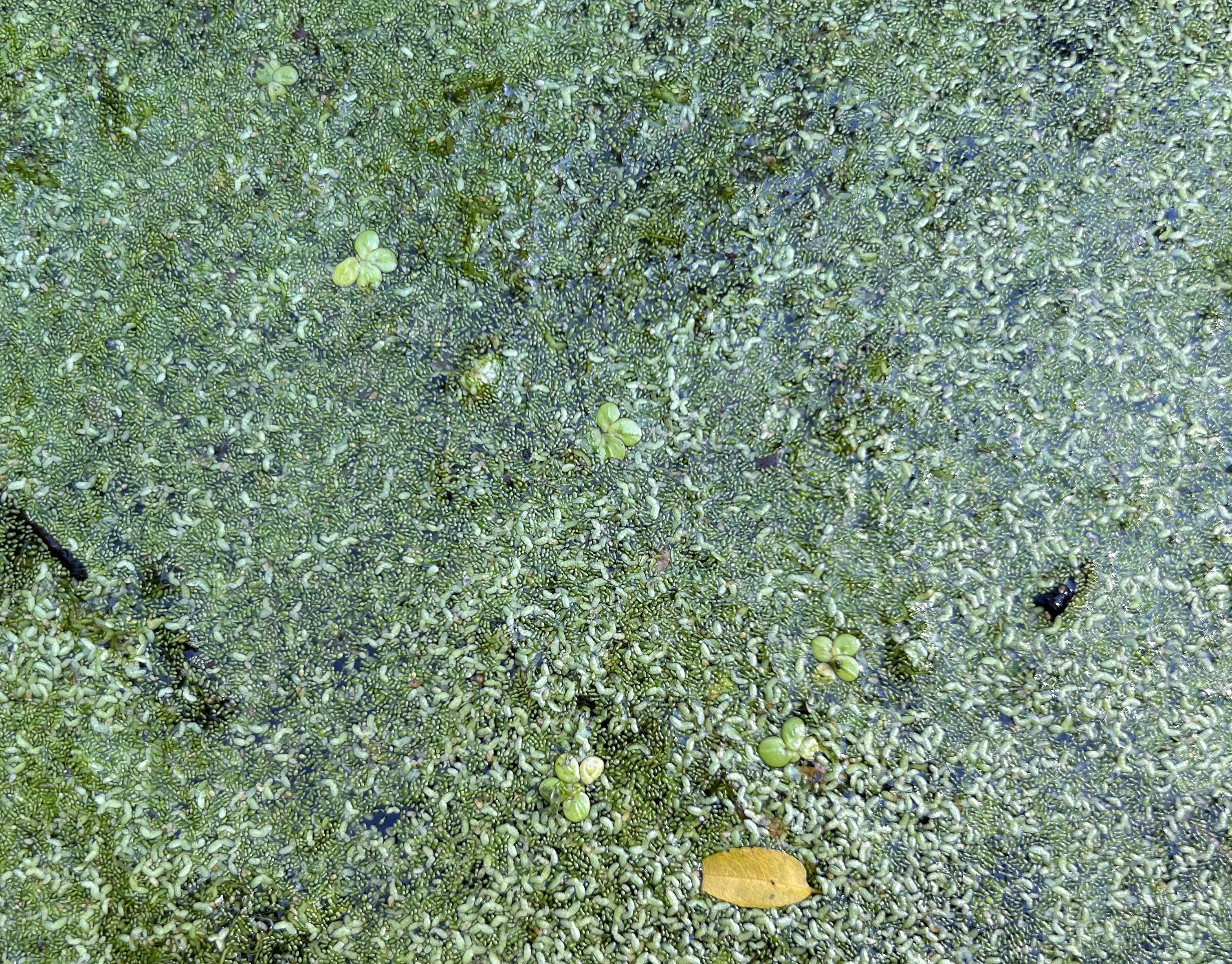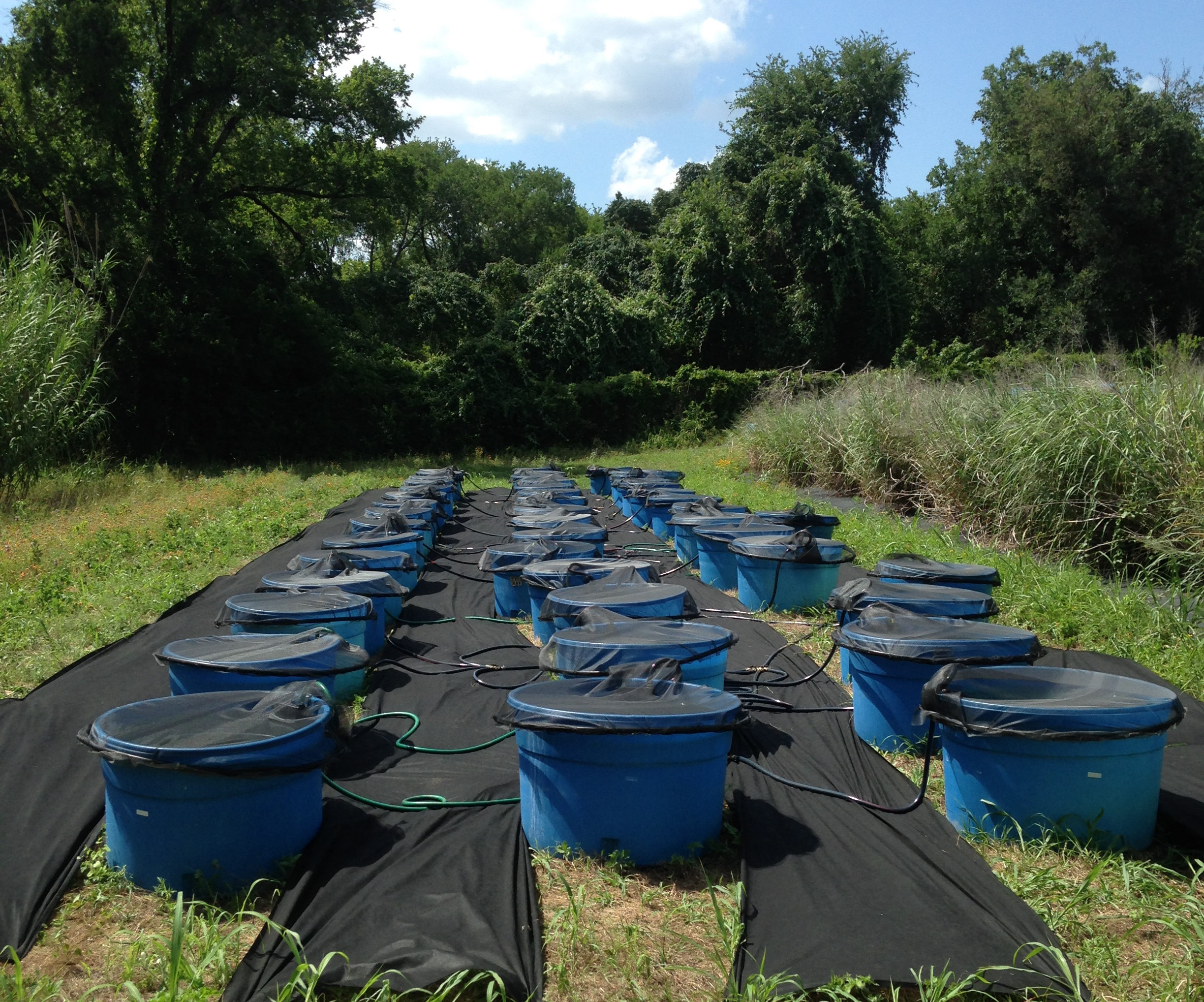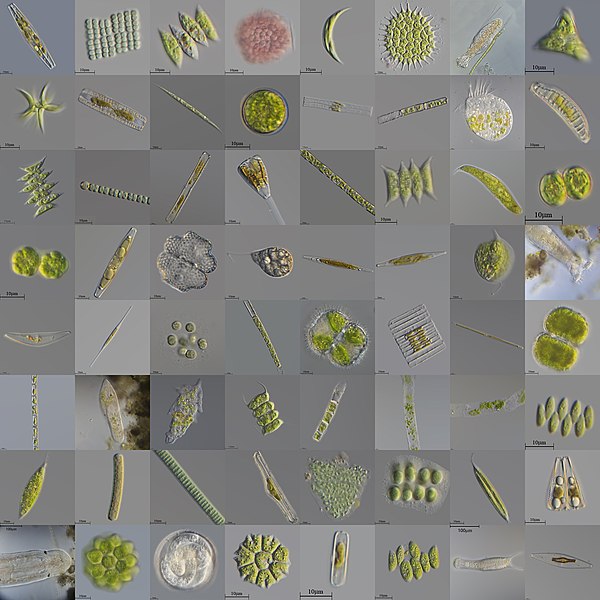Projects
Higher order interactions

Most of community ecology theory is based on two-species interaction models. However, real communities almost always have more than two species, and they are rife with emergent interactions that pairwise relationships fail to predict. Furthermore, we don’t yet understand how these emergent interactions (AKA higher order interactions) might change under different environmental conditions. I am attacking this question using experiments with several duckweed species.
By extending our understanding of duckweed ecology I also hope to contribute to useful applications. Duckweed are promising for sustainable biofuel production, wastewater cleaning, mosquito prevention, and they might even be the next superfood!
Trophic Cascades

I study indirect effects of predators on the base of the food web using “miniature pond” experiments and theoretical models. Besides classic trophic cascades, I investigate the effects of predator diversity and intraguild predation strength (essentially, how much predators eat each other) on both the central tendency and the stability of basal ecosystem properties like phytoplankton biomass.
Relevant publications
Rakowski, C. J.,and M. A. Leibold. 2022. Beyond the fish-Daphnia paradigm: testing the potential for pygmy backswimmers (Neoplea striola) to cause trophic cascades in subtropical ponds. PeerJ 10:e14094 <https://doi.org/10.7717/peerj.14094>.
Rakowski, C. J., C. E. Farrior, S. R. Manning, and M. A. Leibold. 2021. Predator complementarity dampens variability of phytoplankton biomass in a diversity-stability trophic cascade. Ecology e03534 <doi.org/10.1002/ecy.3534>.
Biodiversity and ecosystem functioning

I use experiments and theory to study the ecosystem-level consequences of biodiversity change. Within this realm I am especially interested in ecosystem stability and incorporating food web interactions.
Relevant publications
Wolf, A. A., S. K. Ortiz, and C. J. Rakowski. 2022. Ecosystems: an overview. Chapter 3 in M. Loreau, F. Isbell, and A. Hector, editors. The ecological and societal consequences of biodiversity loss. ISTE, London, UK. Link.
Rakowski, C. J., C. E. Farrior, S. R. Manning, and M. A. Leibold. 2021. Predator complementarity dampens variability of phytoplankton biomass in a diversity-stability trophic cascade. Ecology e03534 <doi.org/10.1002/ecy.3534>.
Rakowski, C., and B. J. Cardinale. 2016. Herbivores control effects of algal species richness on community biomass and stability in a laboratory microcosm experiment. Oikos 125(11):1627-1635 <https://doi.org/10.1111/oik.03105>.
Applications to algae cultivation

I am testing methods for biological zooplankton control using predators in algae cultivation ponds. The goal is to improve the reliability of phytoplankton cultivation for environmental technologies by reducing the impacts of zooplankton in a budget- and environmentally-friendly manner.
Relevant publications
Rakowski, C. J.,M. A. Leibold, and S. R. Manning. 2023. Sunfish as zooplankton control agents to improve yields of wastewater-cultivated algae. bioRxiv 2023.12.22.573129 <https://doi.org/10.1101/2023.12.22.573129>.